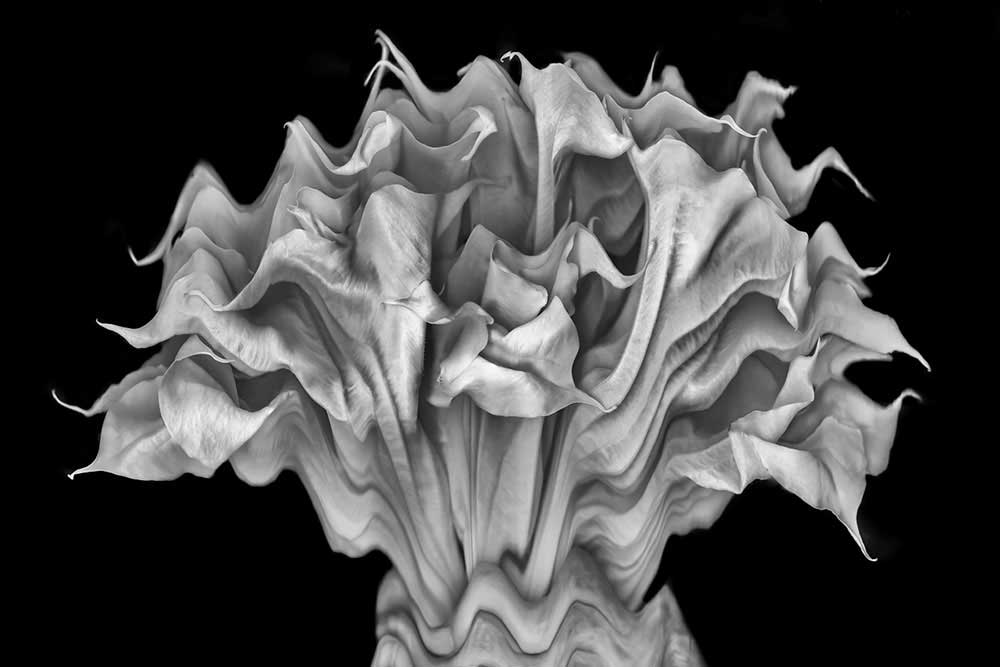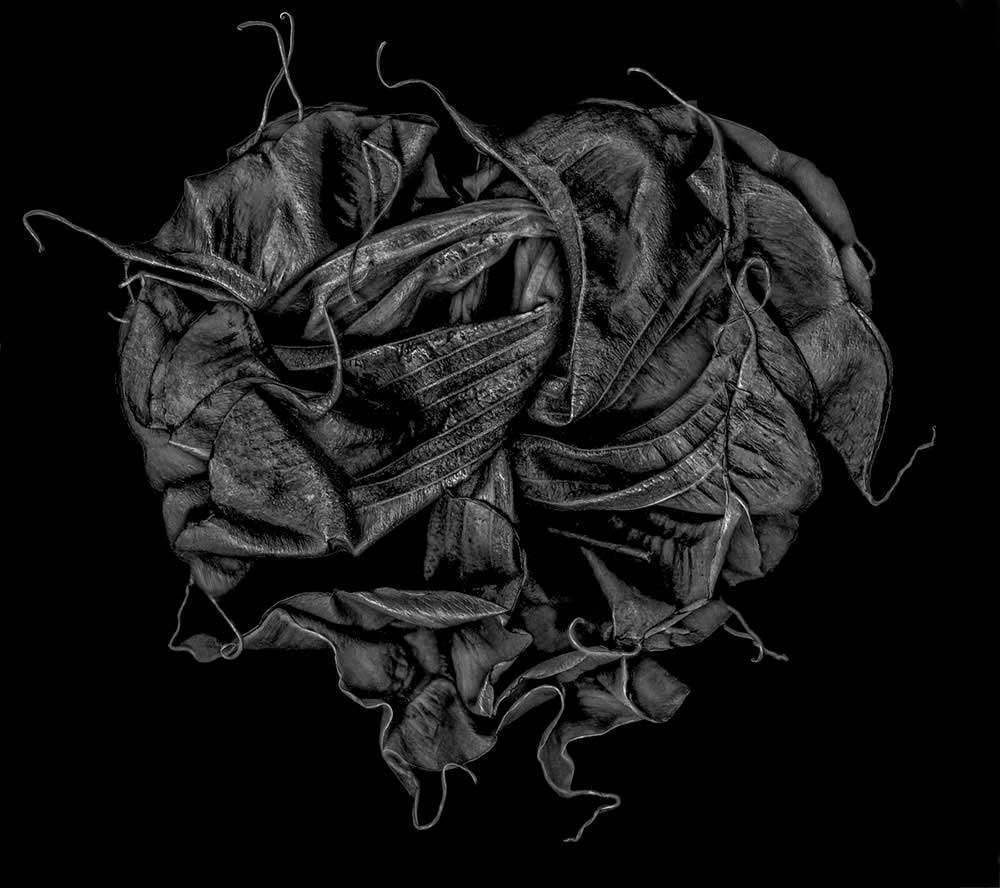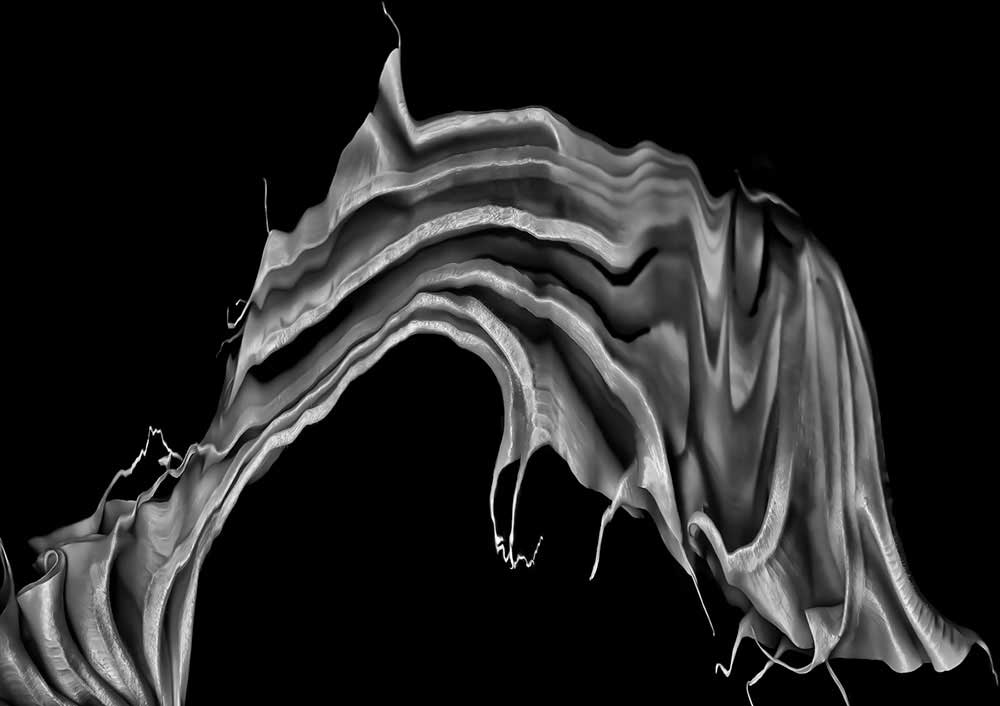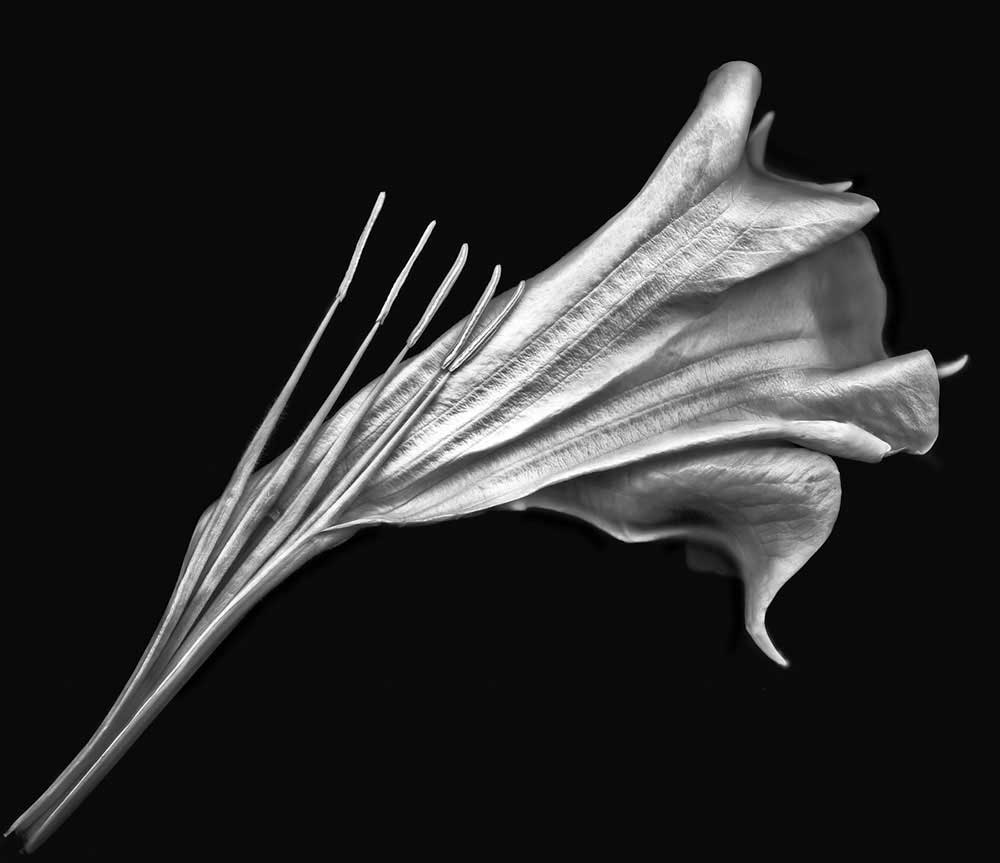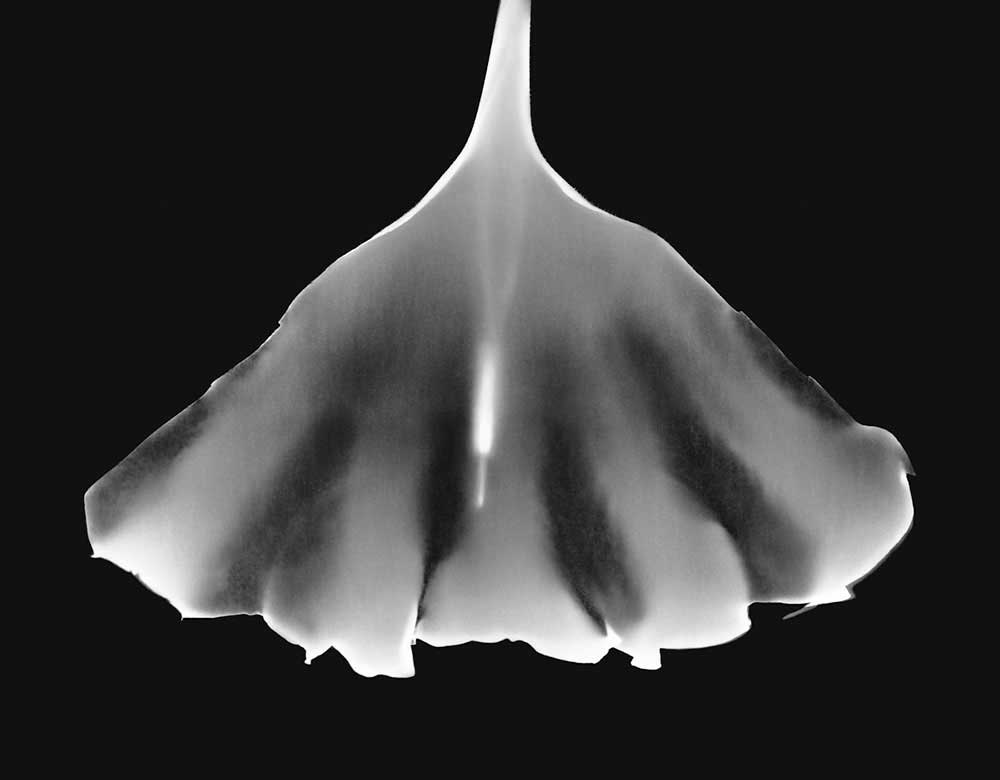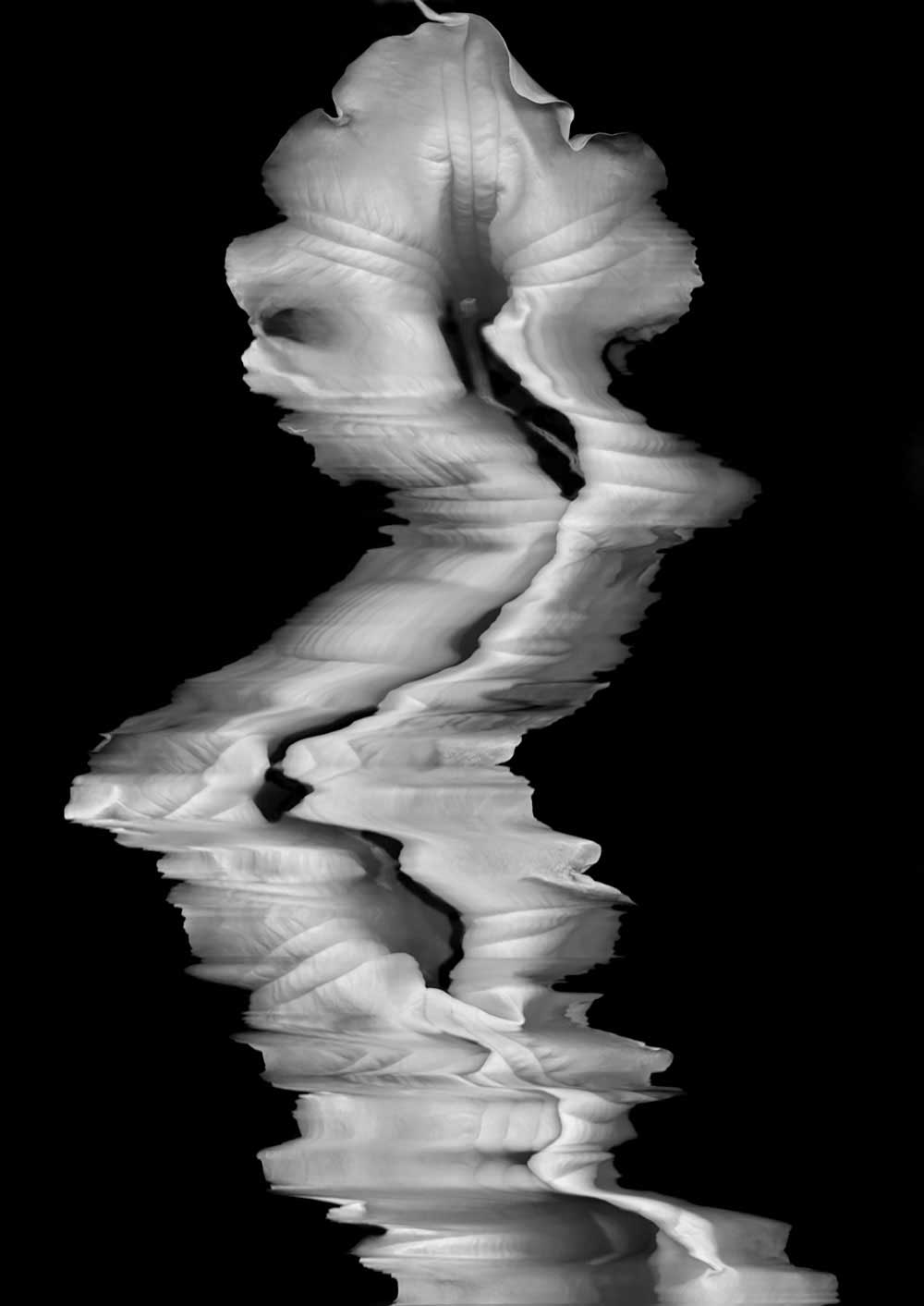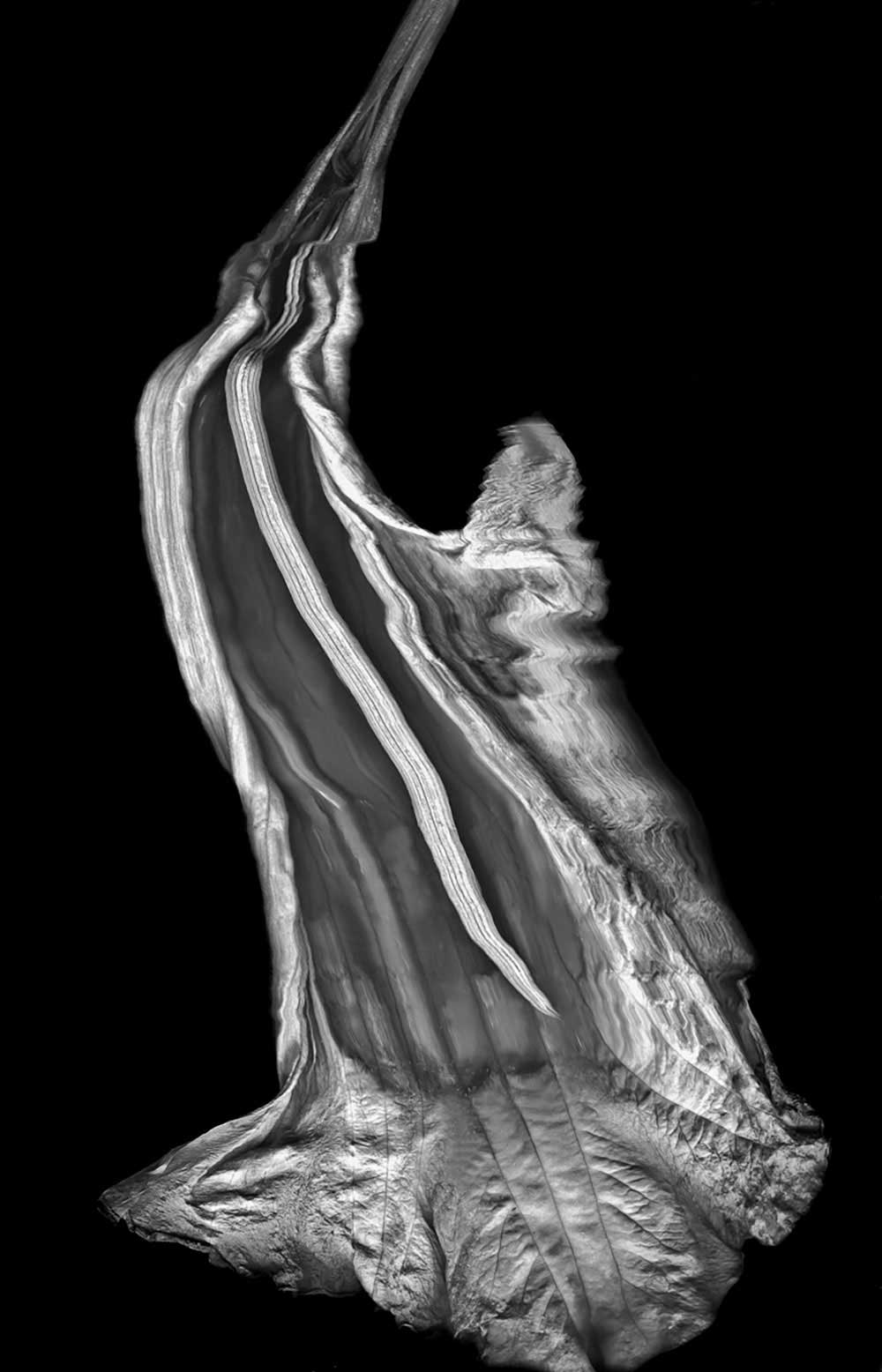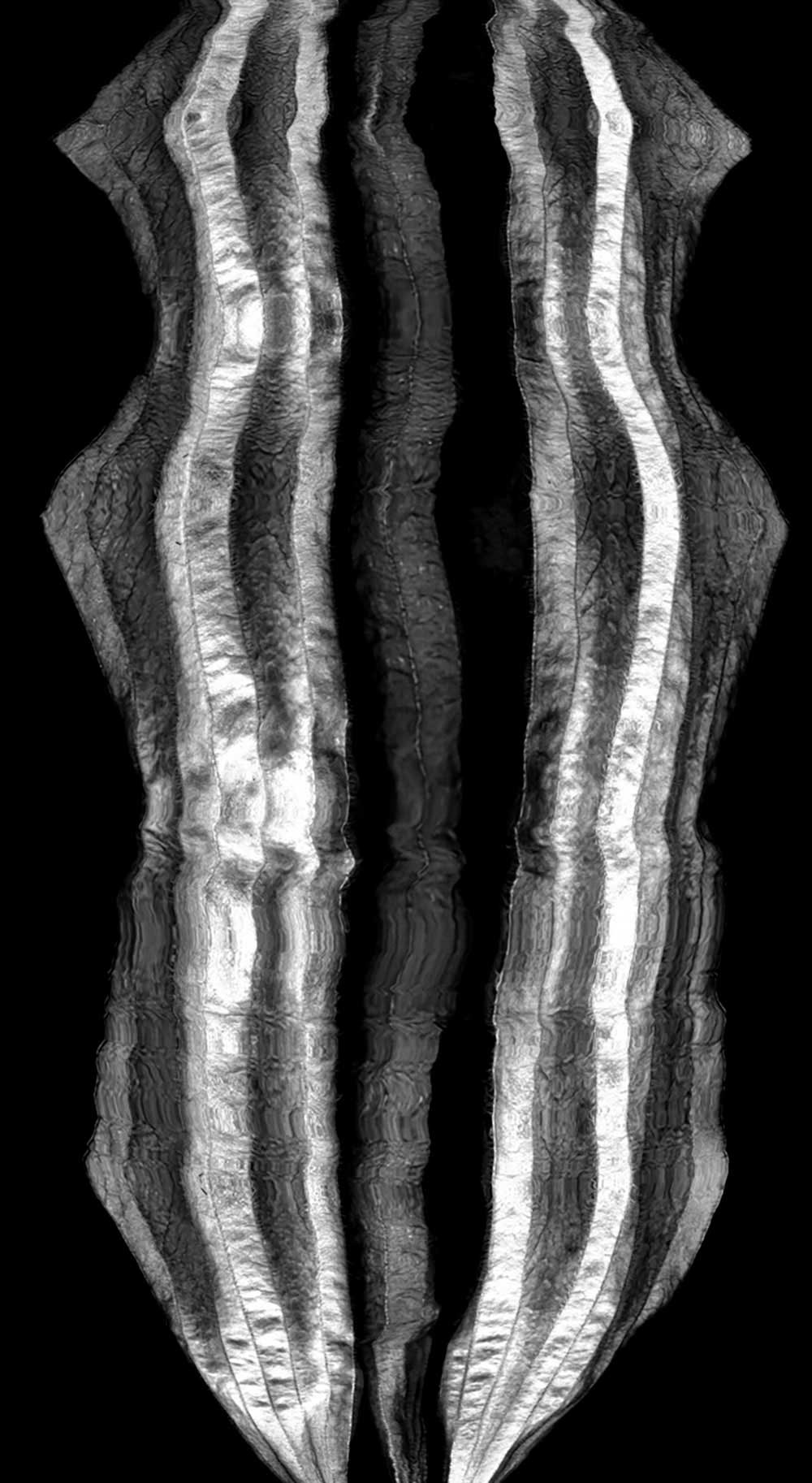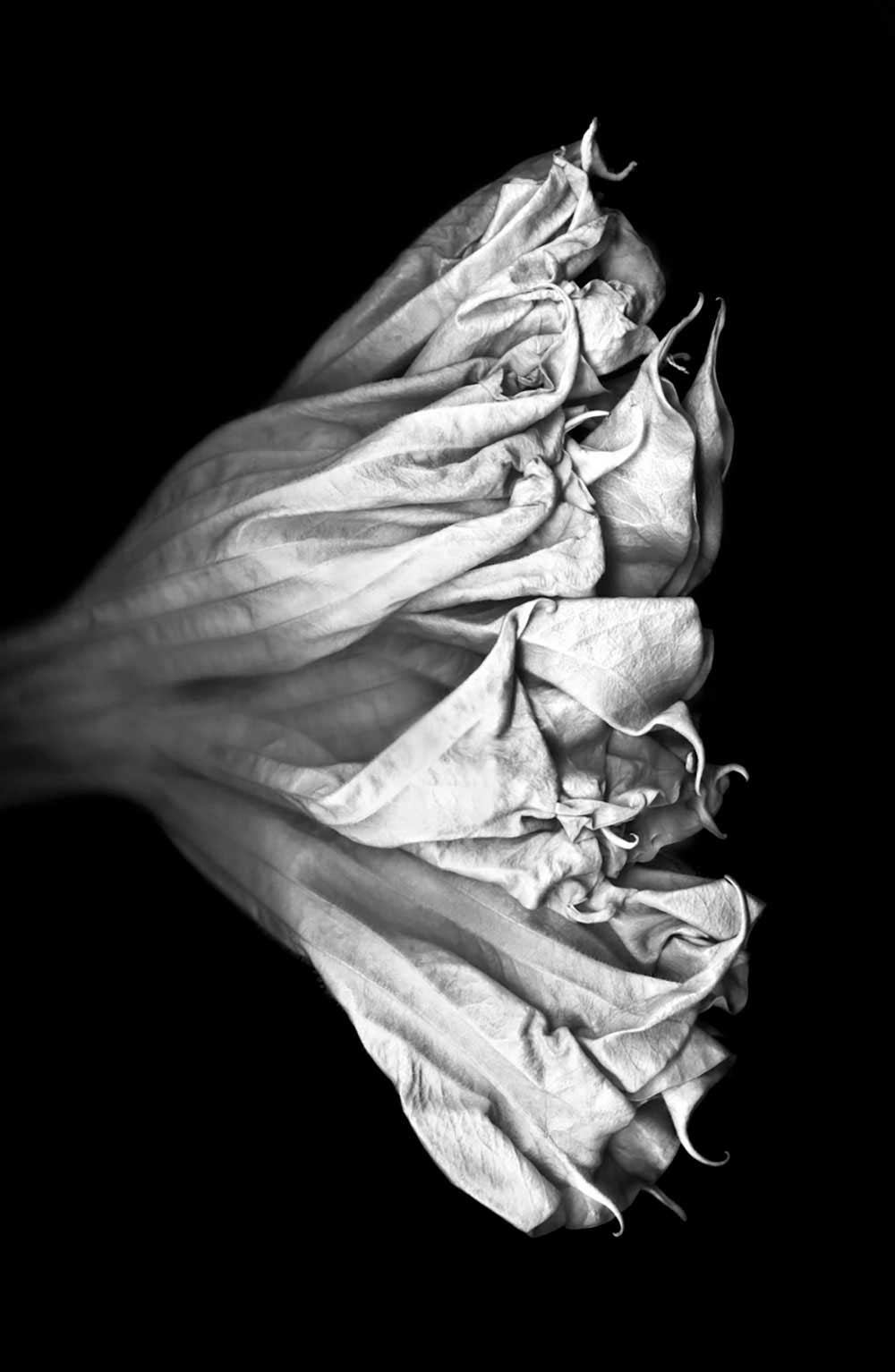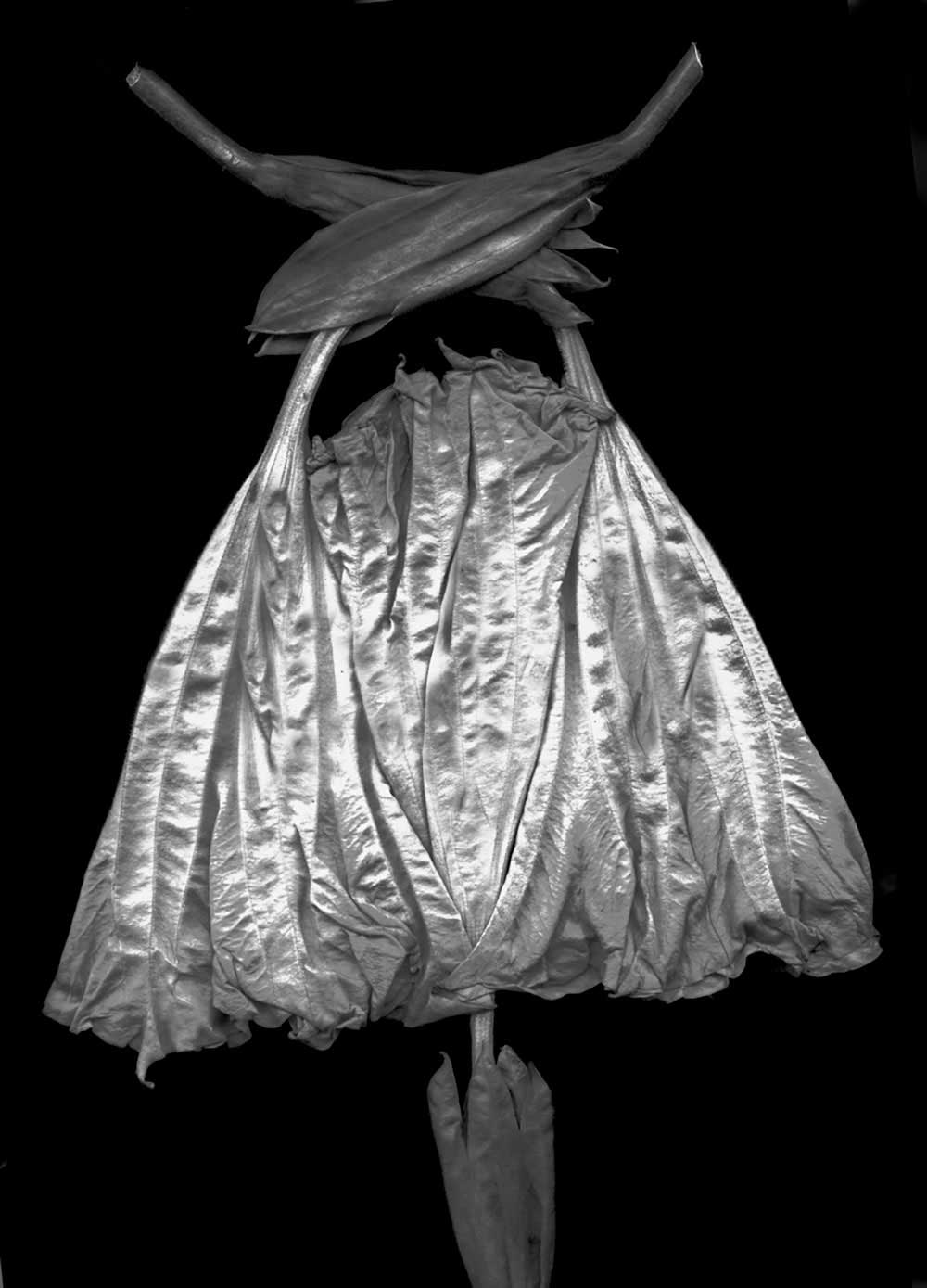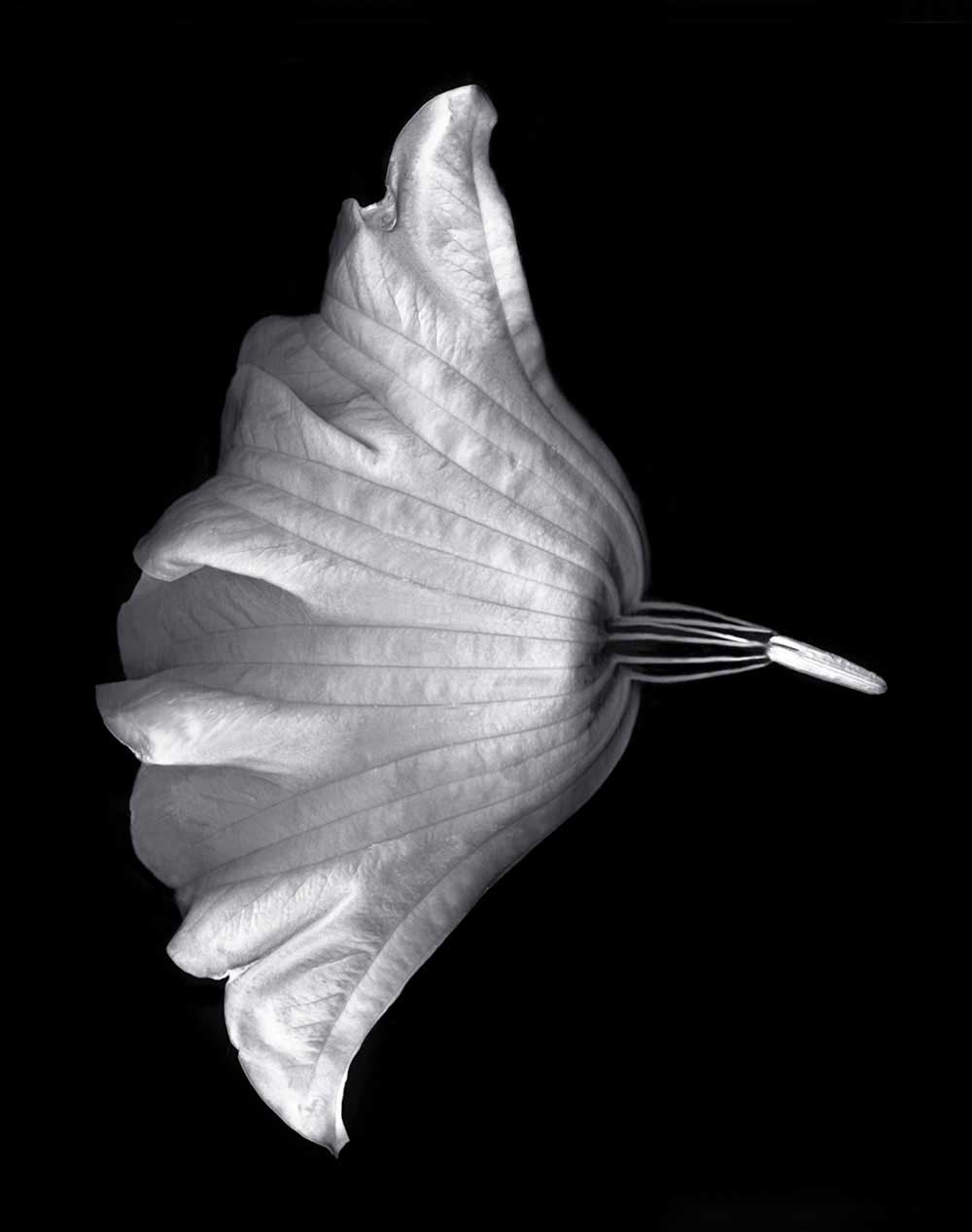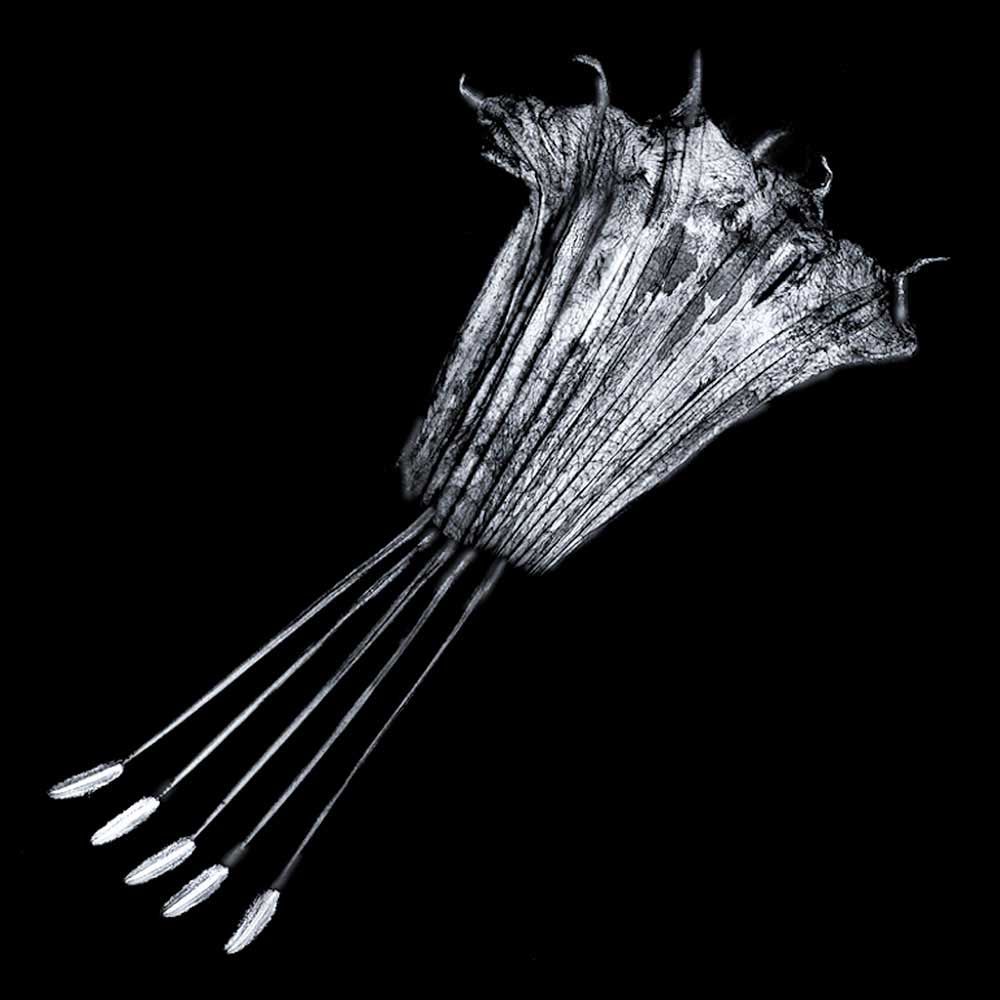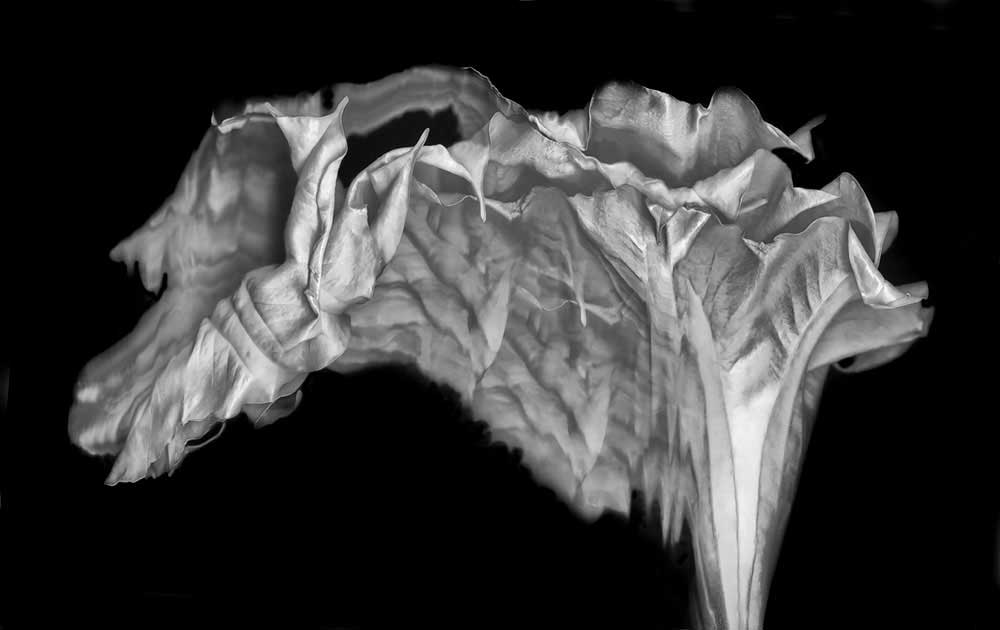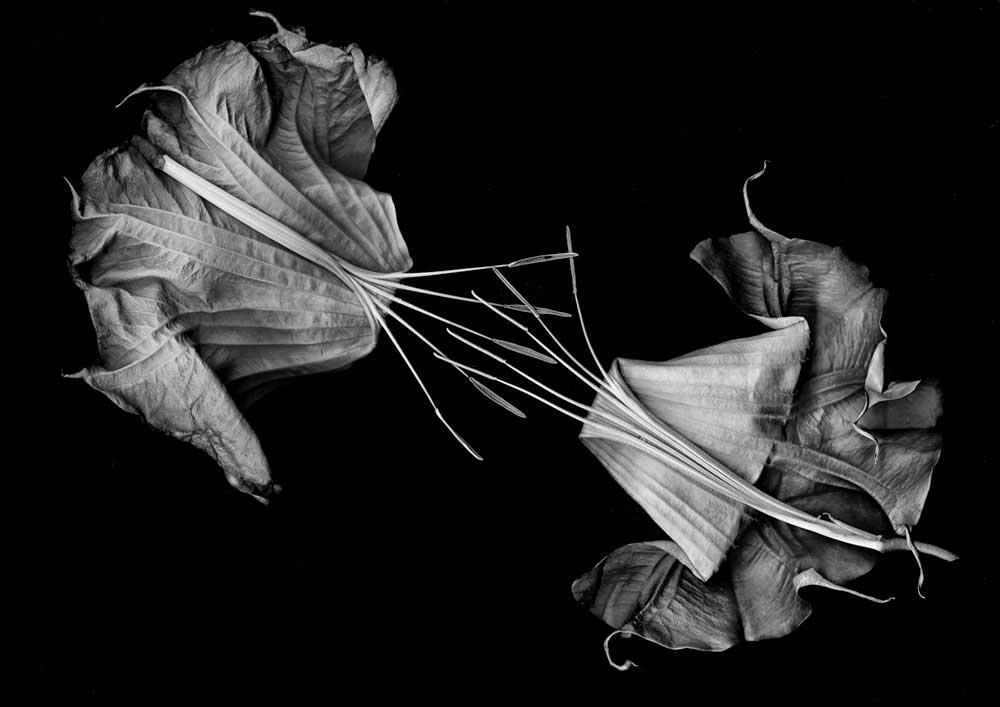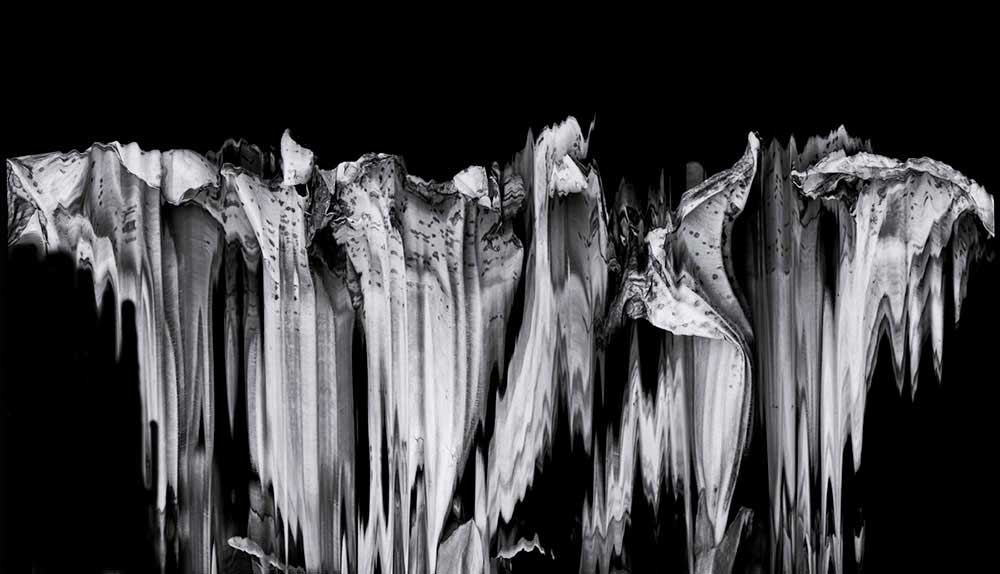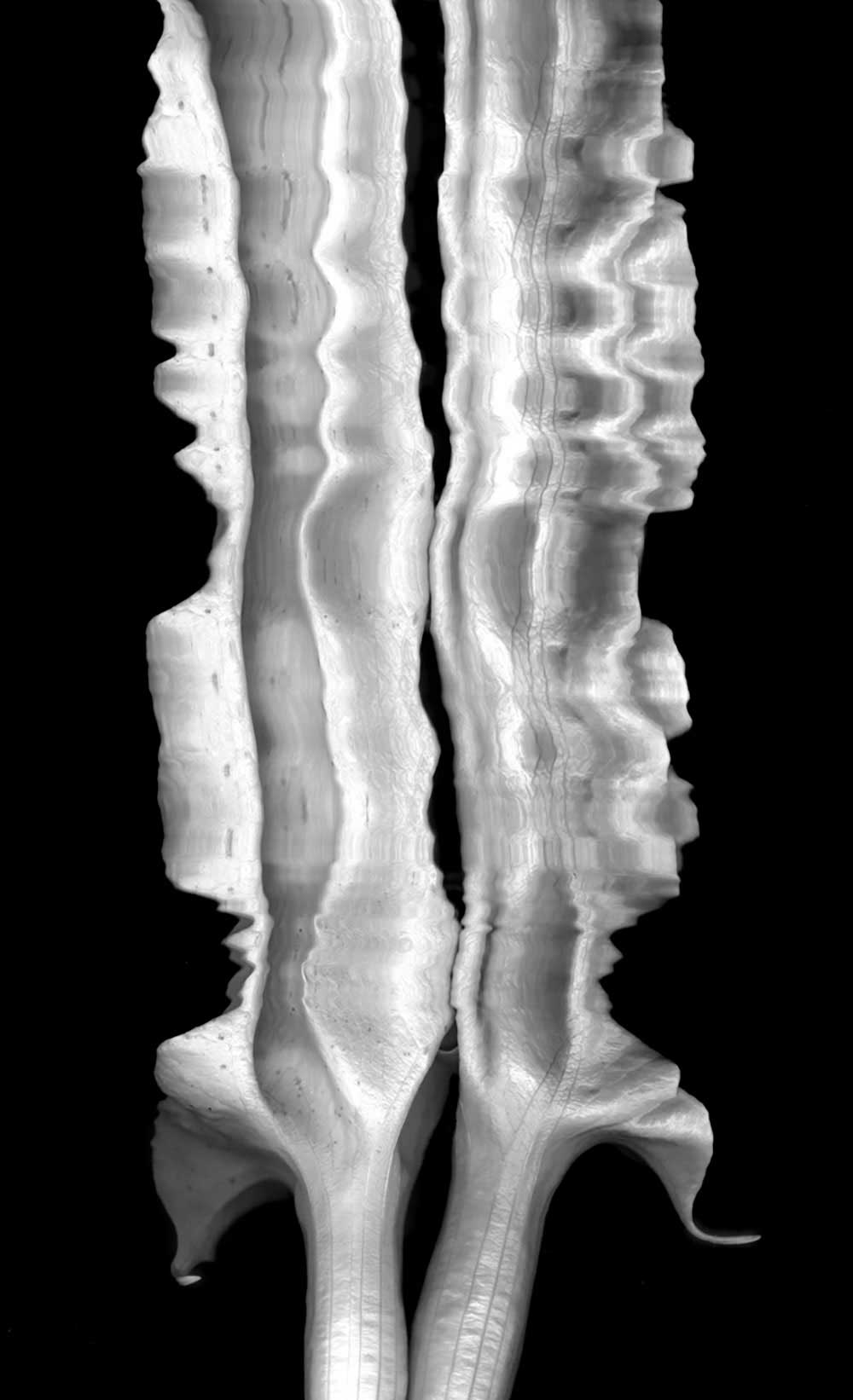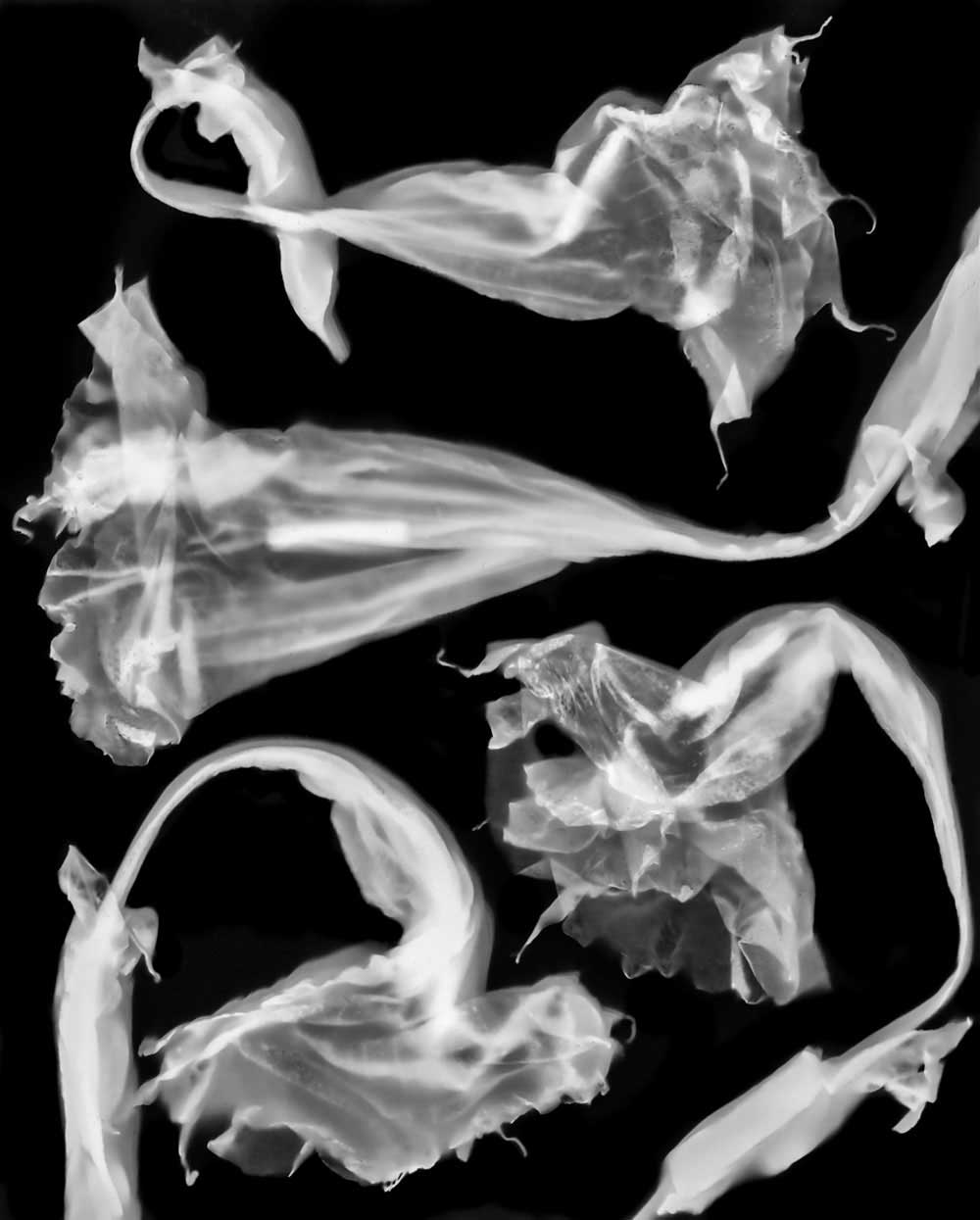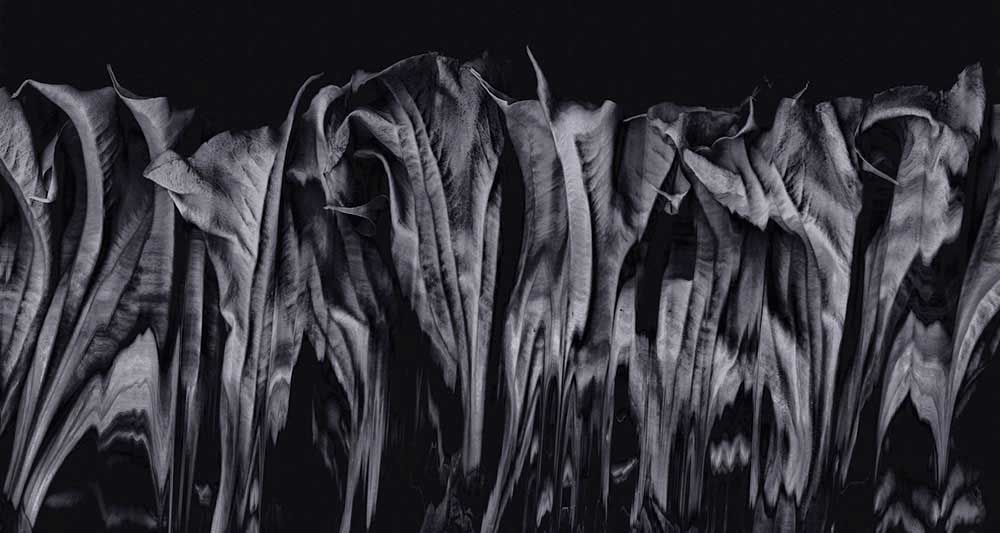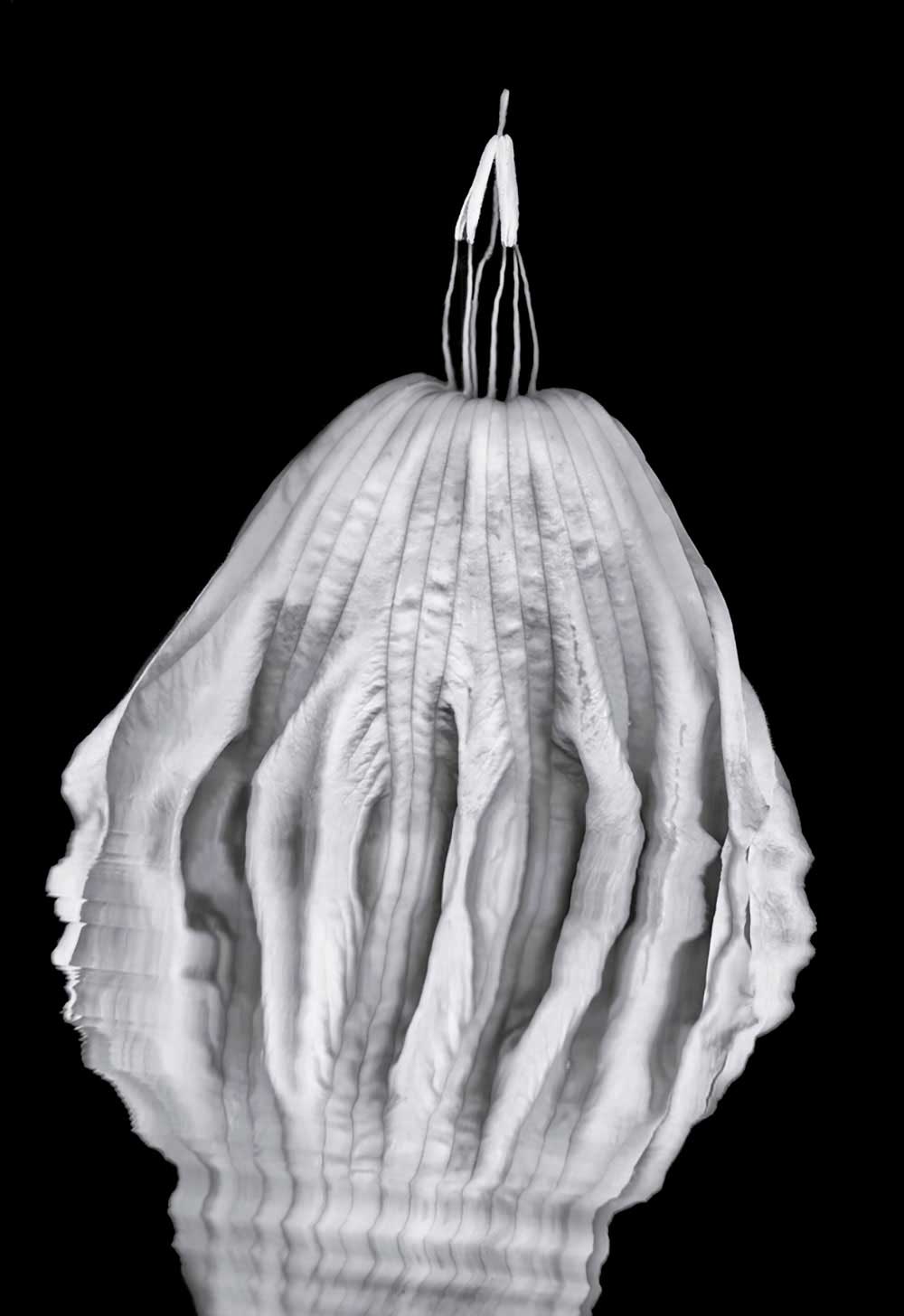Beginning in 1980 I trained enthusiastically in gelatin silver printing with several master printers.
Today, in making an archival monochromatic pigment print, I work by the same standards and strive to match the quality of luminous gelatin silver. I have yet to be without my own darkroom even a single month.
My passion for close-up studio botanicals, particularly the common brugmansia, has everything to do with the capacity of its 3D form to morph into seemingly endless 2D variations. The surfaces at various stages of aging can sometimes be teased into a glow, shine, or unique texture. Surgical alterations are always fair play, as are radical movements on the large industrial scanner, desaturated lumen prints, and photograms.
Our garden produces a great number of these “angel’s trumpets”. From time to time I show up to the studio with the wish to create a new form, having no clue how to make a unique one; they seem to respond to intuition and a driving fierce persistence. Photo software enables cleanup but never changes what actually gets recorded in the motion images or the stills, always a single frame, always brugmansia.
Shapes of the images vary a lot, because enforced physical uniformity might otherwise weaken valuable compositional tension. “Death and Transfiguration” is also about the physical transformation of this magnificent specimen into a myriad of expressive poses and movements which, at their best, stretch old aesthetic notions. My intent is to break out of the historical concept of the fine art still life floral, and to offer illustrations of how this all-too-literal genre might be brought into the fine art realm of the 21st century. (If chosen for publication, I grant permission to re-order the images.) [Official Website]
